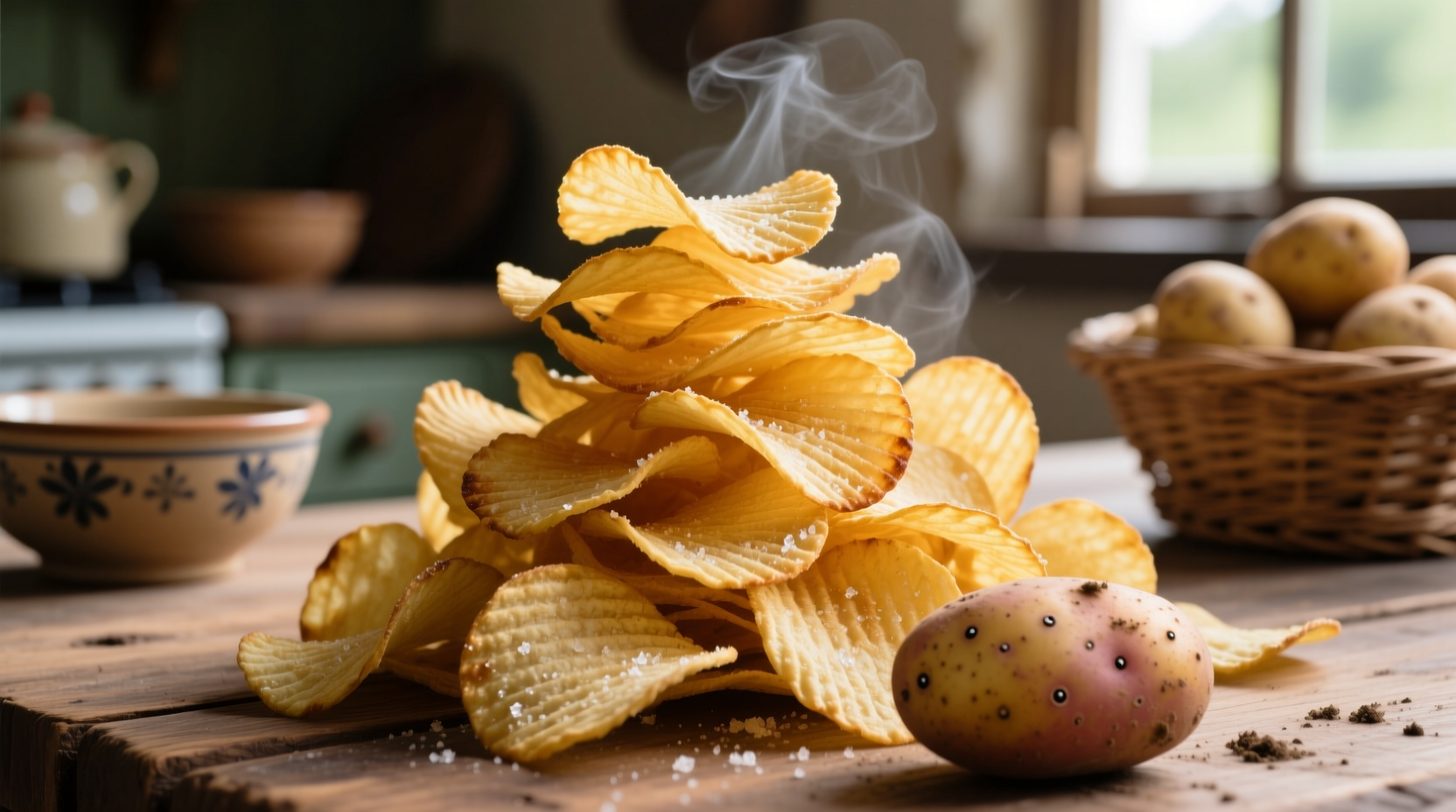The Science Behind Perfect Potato Chips: Why Variety Matters
When you bite into a perfectly crisp, golden potato chip, you're experiencing the result of precise agricultural science. Not all potatoes can deliver that ideal crunch and color—only specific varieties engineered for chip production succeed. Understanding the relationship between potato composition and frying performance transforms your chip-making results, whether you're a commercial producer or home cook.
What Makes a Potato Chip-Worthy?
The magic happens through three critical chemical properties working in harmony during frying:
- Starch content (18-22% dry matter)—creates structural integrity for crispness
- Sugar levels (below 0.5%)—prevents excessive Maillard browning
- Moisture balance—ensures proper oil absorption without sogginess
When potatoes with improper composition hit hot oil, you get either burnt, bitter chips from high sugar content or limp, greasy results from insufficient starch. The University of Wisconsin's Potato Research Program confirms that even small variations in these factors dramatically impact final product quality.

Top Potato Varieties for Chip Production
Commercial chip manufacturers rely on specific cultivars bred exclusively for processing. These varieties undergo rigorous testing for frying performance before reaching fields.
| Potato Variety | Dry Matter % | Sugar Content | Primary Use | Storage Performance |
|---|---|---|---|---|
| Russet Burbank | 18-22% | <0.5% (ideal) | Industry standard for chips | Excellent (6-8 months) |
| Atlantic | 19-21% | <0.3% (exceptional) | Popular for kettle chips | Good (5-7 months) |
| Snowden | 17-20% | <0.4% | Alternative commercial option | Very Good (6 months) |
| Yukon Gold | 15-17% | 0.8-1.2% (problematic) | Table use only | Poor (3-4 months) |
Data sourced from the USDA Agricultural Research Service demonstrates why Russet Burbank remains the dominant choice: its consistent performance across growing conditions and exceptional storage characteristics maintain ideal frying properties throughout the production cycle.
Why Your Grocery Store Potatoes Fail for Chips
Table potatoes like Yukon Gold or red potatoes contain higher sugar levels (0.8-1.2%) that cause rapid, uneven browning during frying. Their lower starch content (15-17% dry matter) produces chips that lack structural integrity, resulting in greasy, limp products. The Oregon State University Extension Service explains that these varieties prioritize fresh-eating qualities over processing performance.
Even Russets sold for table use often disappoint chip makers because:
- They've been stored under conditions that increase sugar content
- They lack the precise dry matter percentage required
- Commercial chip potatoes undergo specialized curing processes
Selecting Potatoes for Home Chip Making
While true chip potatoes aren't available to consumers, you can optimize your results with these professional techniques:
- Choose mature Russets—look for thick, netted skin and avoid any with green spots
- Test firmness—proper chip potatoes feel dense and heavy for their size
- Check storage conditions—avoid potatoes stored below 45°F (increases sugar conversion)
- Conduct the iodine test—dip a cut potato in iodine solution; dark blue indicates sufficient starch
For best results, store potatoes at 45-50°F for 2-3 weeks before processing. This allows sugars to convert back to starch, improving frying performance. The American Journal of Potato Research confirms this simple technique can reduce sugar content by up to 40% in marginal potatoes.
Troubleshooting Common Chip Problems
Understanding potato composition helps solve these frequent issues:
- Soggy chips—indicates insufficient starch content; try a different Russet batch
- Excessive browning—high sugar content; increase storage temperature slightly
- Uneven cooking—inconsistent slice thickness; use a mandoline for uniform cuts
- Bitter taste—green spots contain solanine; discard affected potatoes completely
Commercial producers maintain strict quality control through near-infrared spectroscopy that measures exact starch and sugar levels before processing. While home cooks don't have this technology, understanding these principles helps you make better selection choices.
Practical Tips for Better Homemade Chips
Maximize your success with these professional techniques:
- Soak sliced potatoes in cold water for 30 minutes to remove surface starch
- Blanch slices in 300°F oil for 2 minutes before final frying at 350°F
- Maintain precise oil temperature with a digital thermometer
- Season immediately after frying when chips are still slightly oily
These methods compensate for the limitations of table potatoes, bringing your results closer to commercial quality. Remember that even with perfect technique, true chip potatoes will always outperform table varieties due to their genetically optimized composition.











 浙公网安备
33010002000092号
浙公网安备
33010002000092号 浙B2-20120091-4
浙B2-20120091-4